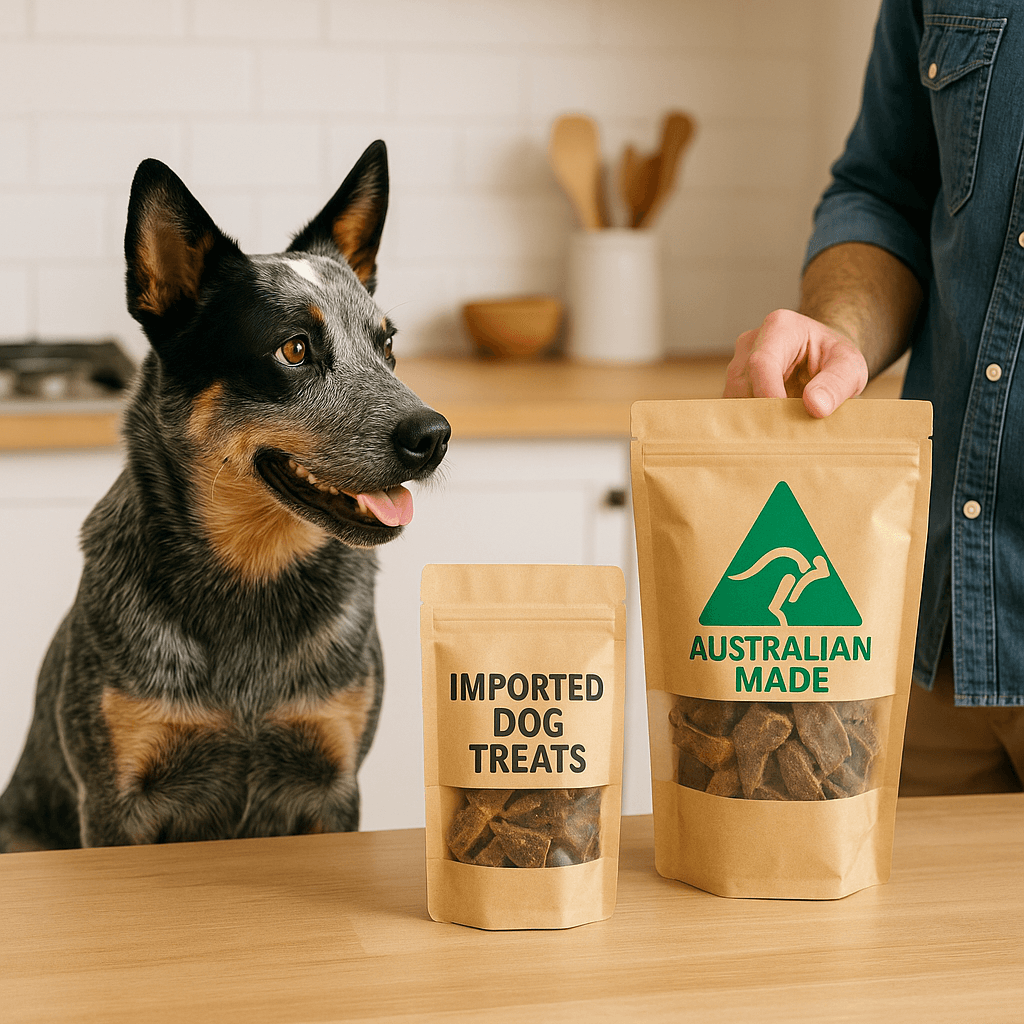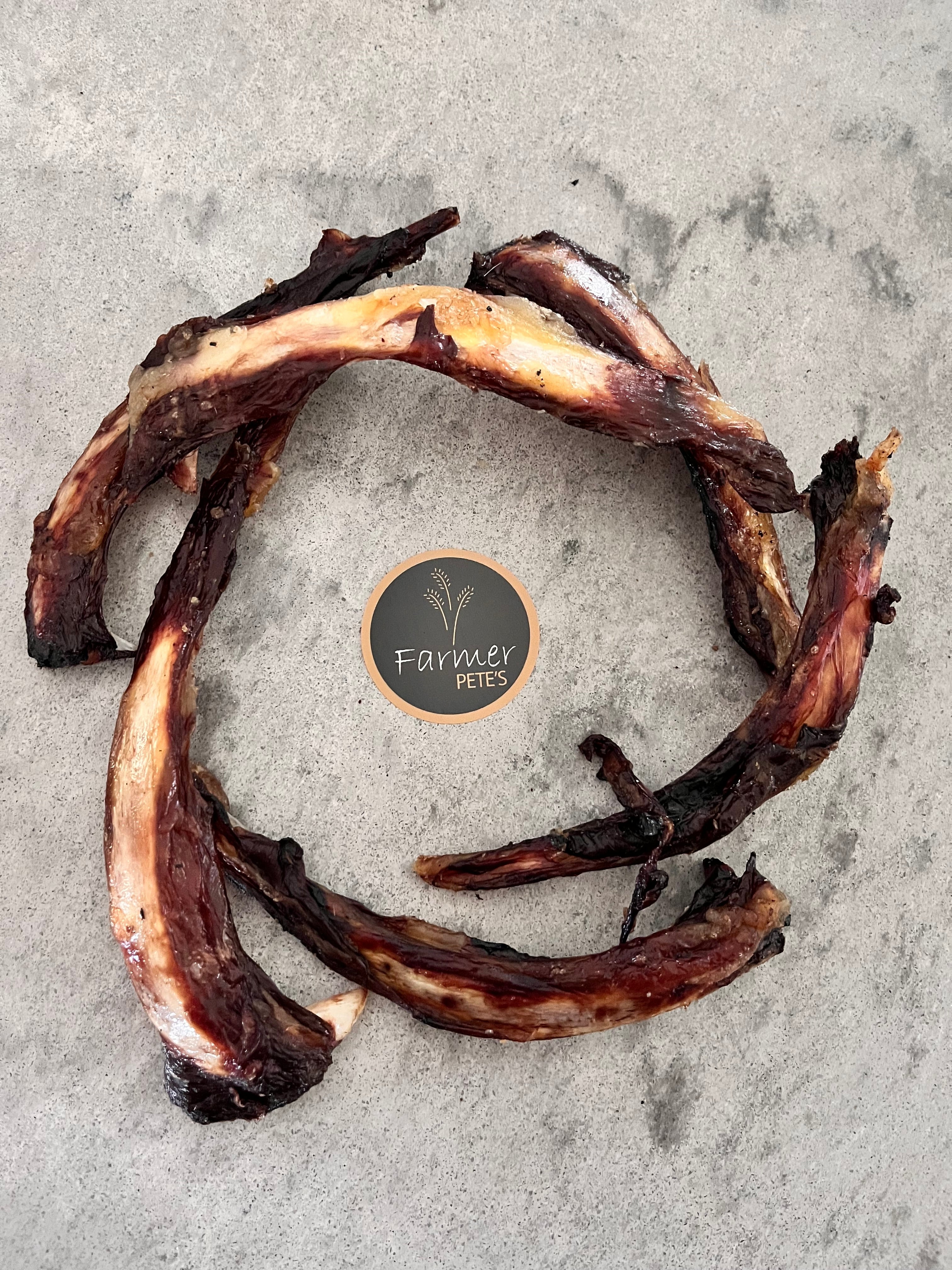If I look at my 10-year-old Labrador Retriever (Halo) and consider her eating habits. I would say never in a million years does she get bored with eating the same food, any food, whether it is healthy or not she will devour everything with the excitement of a puppy. She even can tell the time and at 4.45pm she will move closer to me, 4.50pm give me a winge, 4.55pm a nudge, and at 5pm on the dot do all 3. This is dinner time, and any dinner will do.
However, my 3-year Jack Russell Terrier (Holly) thinks that the world owes her something and will turn her nose up at anything not fresh, with a topper on top, and with added dehydrated offal treats from Farmer Pete’s Pet treats. Only then will she happily eat her dinner and clean the bowl of Halo’s as well. Then she will come looking for any extra treats with those I’m starving eyes.
So would you say either of my dogs get bored with their food?
If you’re a dog owner, you’ve likely asked yourself this question: “Does my dog get bored eating the same food every day?” While dogs are known for their loyalty, affection, and enthusiasm, they’re also creatures of habit.
However, understanding their relationship with food can help you make the best choices for their diet and overall well-being.
The Biology Behind a Dog’s Taste Preferences
Dogs have taste buds, just like humans, but the way they experience food is quite different. Humans have about 9,000 taste buds, whereas dogs have only around 1,700. This means their sense of taste is much less developed than ours. While humans can savour a wide variety of flavours, dogs tend to focus on the basics: sweet, salty, sour, bitter, and taste. They’re also more influenced by smell than taste, as their sense of smell is far superior to ours.
Dogs have about 220 million olfactory receptors compared to the 5 million in humans, which makes their sense of smell approximately 40 times stronger than ours.
In the wild, a dog’s ancestors—wolves—did not have the luxury of choosing their meals. They ate what was available, often the same prey animals, day after day. This evolutionary history suggests that dogs are less likely to get bored with repetitive meals than humans.
Wolves often consumed entire animals, including organs and bones, which provided a varied diet despite eating the same species frequently. This adaptation has carried over to domestic dogs, who seem more focused on whether food is edible and nutritious rather than diverse.

Do Dogs Experience Food Boredom?
Food boredom is a human concept and is not scientifically proven to exist in dogs. Most dogs are content eating the same food every day if it meets their nutritional needs. However, there are exceptions. Some dogs may appear to get tired of their food, but this behaviour is often linked to other factors, such as:
Health Issues: Loss of appetite or a sudden disinterest in food could be a sign of dental problems, gastrointestinal issues, or other underlying health concerns. For example, a dog with a toothache might avoid hard kibble, while one with an upset stomach might refuse food entirely.
Palatability: If the food lacks strong aromas or appealing textures, a dog may be less interested in eating it. Dogs are often drawn to foods with a rich smell, which is why wet foods or broths are sometimes more appealing than dry kibble.
Environmental Factors: Stress, anxiety, or changes in routine can affect a dog’s eating habits. A move to a new home, the arrival of a new pet, or even a change in feeding location can impact their appetite.
Overfeeding Treats: If a dog receives too many high value treats or table scraps, they may become picky, expecting something more exciting than their regular kibble. This can lead to a refusal of their normal food, creating the impression of boredom.
Benefits of Feeding Canines Consistent Meals
Consistency in a dog’s diet has several advantages:
Digestive Health: Dogs have sensitive stomachs, and sudden changes in diet can lead to digestive upset, including diarrhoea and vomiting. Feeding the same food regularly helps maintain gut health and minimises the risk of gastrointestinal distress.
Nutritional Balance: High-quality dog foods are formulated to provide complete and balanced nutrition. Switching foods frequently could result in nutrient imbalances, especially if the new food is not nutritionally equivalent.
Routine: Dogs thrive on routine. Knowing when and what they will eat can reduce anxiety and promote a sense of stability. A consistent feeding schedule can also help with potty training and managing weight.
When a Dog’s Food Variety Might Be Necessary?
While consistency is generally good, there are situations where introducing variety can be beneficial:
Food Allergies or Sensitivities: If your dog develops an allergy or sensitivity to a specific ingredient, switching to a different protein source or formula may be necessary. Common allergens include chicken, beef, and grains.
Picky Eaters: Some dogs genuinely dislike certain flavours or textures. Experimenting with different options, such as switching from kibble to fresh food or trying a different protein, can help you find a food they enjoy.
Aging Dogs: Senior dogs may benefit from foods tailored to their changing nutritional needs, such as those with higher fibre for digestive health or lower fat content to manage weight. Foods enriched with glucosamine and chondroitin can also support joint health in older dogs.
Supplementing Nutrition: Occasionally adding safe, vet-approved human foods like cooked chicken, pumpkin, or green beans can enhance the palatability and nutritional value of meals. These additions can also provide variety without compromising the dog’s primary diet.
Signs Your Dog May Want a Change in Food
Although most dogs are happy with a consistent diet, some signs might indicate they’re ready for a change:
Reluctance to Eat: If your dog leaves their food untouched or takes longer than usual to finish it, they might not find it appealing anymore. This could also signal an issue with the freshness of the food.
Begging or Scavenging: Increased begging for table scraps or searching for food elsewhere could indicate dissatisfaction or a lack of satiety.
Weight Loss: Consistent refusal to eat could lead to weight loss, signalling a need for dietary adjustments or a veterinary check-up to rule out health issues.
How to Safely Introduce Variety into Your Dog’s Diet
If you decide to switch your dog’s food, it’s essential to do so gradually to avoid upsetting their stomach. Follow these steps:
Mix the Foods: Start by mixing a small amount of the new food with the old food, gradually increasing the ratio of new to old over 7-10 days. This allows the dog’s digestive system to adjust.
Monitor Reactions: Watch for signs of digestive upset, such as diarrhoea, vomiting, or flatulence. If any issues arise, slow down the transition or consult your veterinarian.
Stick to Quality: Choose high-quality dog foods for complete and balanced nutrition. Research brands and consult your vet for recommendations.
Consult Your Vet: Always consult your veterinarian before making significant changes to your dog’s diet, especially if they have health conditions like kidney disease, diabetes, or obesity.
Myths About Dog Diets
There are several misconceptions about dogs and their eating habits:
Dogs Need Variety Like Humans: Unlike humans, dogs don’t crave culinary diversity. What they need is consistent, high-quality nutrition that supports their health.
Table Scraps Are Fine: While occasional human food can be safe, feeding table scraps regularly can lead to nutritional imbalances and bad habits. Certain human foods, like onions, chocolate, and grapes, are toxic to dogs and should always be avoided.
Grain-Free Is Always Better: Unless your dog has a diagnosed grain allergy, grain-inclusive diets can be just as healthy as grain-free options. Recent studies have also linked some grain-free diets to heart issues in dogs, emphasising the importance of consulting your vet.
Keeping a Dog’s Meal Exciting Without Changing the Food
If you’re concerned about your dog getting bored, there are ways to make mealtime more engaging without altering their primary diet:
Interactive Feeders: Use puzzle feeders or treat-dispensing toys to make eating more stimulating. These tools can help engage your dog’s mind and provide additional exercise.
Add Toppers: Incorporate dog-safe toppers like Farmer Pete’s Meal Topper Varieties to enhance the flavour and aroma of their meals.
Serve Warm Food: Warming your dog’s food can enhance its aroma and make it more appealing, especially in colder months.
Vary Presentation: Occasionally changing the way food is presented, such as serving kibble in a shallow dish versus a deep bowl, can add novelty without altering the diet itself.
Conclusion
While dogs may not get “bored” of eating the same food in the way humans do, their preferences and needs can change over time. Observing your dog’s behaviour and consulting with your veterinarian are key to ensuring they stay happy and healthy.
By providing consistent, high-quality nutrition and occasionally spicing things up in a safe and controlled manner, you can keep your furry friend’s tail wagging at every meal.
Remember, a well-fed dog is a happy dog, and understanding their dietary needs is one of the many ways we show our love for them.



